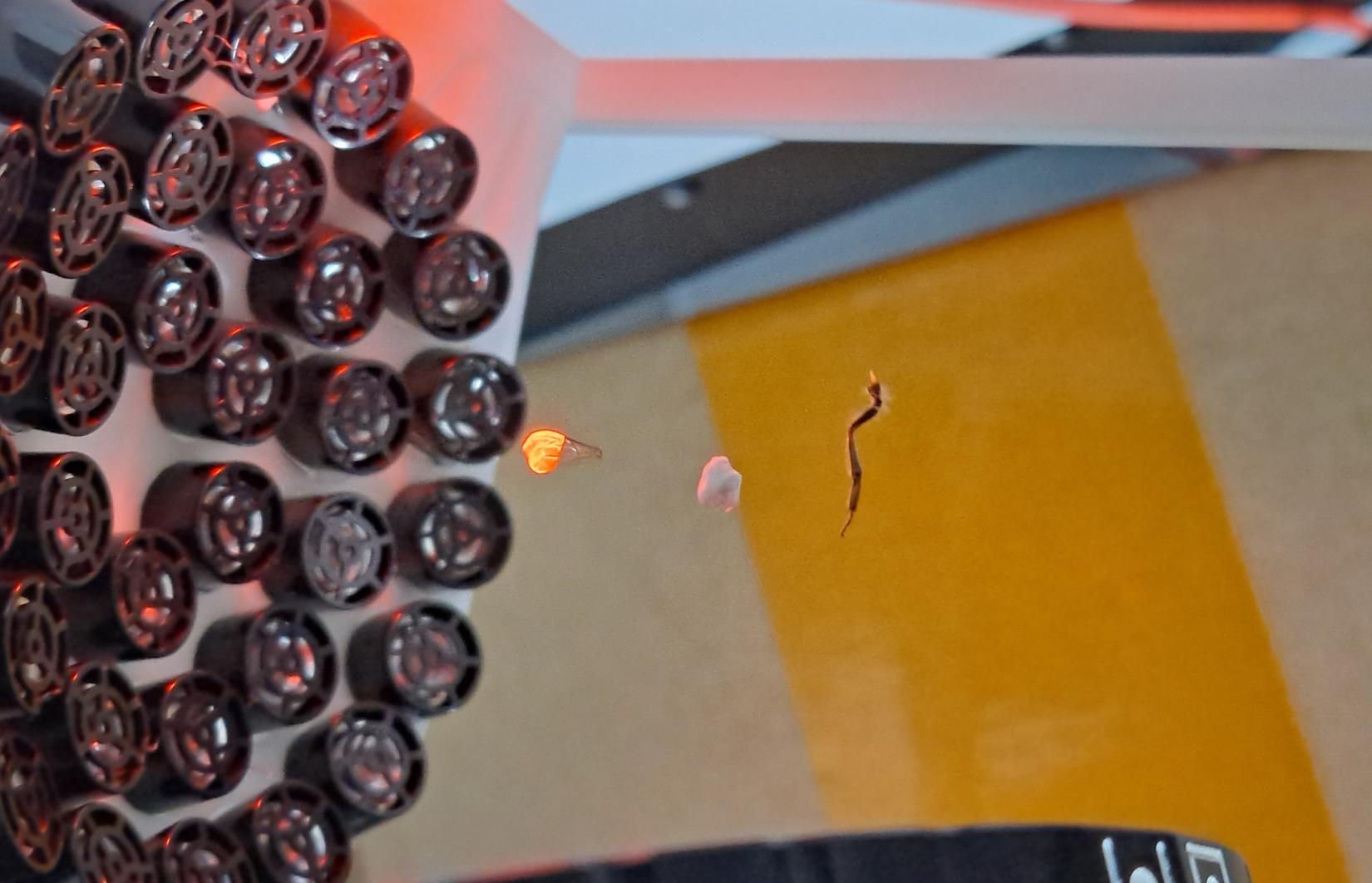(Nanowerk News) Like an invisible pair of tweezers, sound waves can be used to levitate tiny objects in the air. While DIY acoustic levitation kits can be found online, the technique has important applications for research and industry including manipulating sensitive material such as biological cells.
New research led by scientists at the University of Technology Sydney (UTS), in partnership with the University of New South Wales (UNSW), has shown that to precisely control a particle using ultrasonic waves, it is necessary to consider its shape, and the impact this has on the acoustic field. The research has just been published in the journal Physical Review Letters ("Willis Coupling-Induced Acoustic Radiation Force and Torque Reversal").

Levitation of an ant leg and a bee's wing. (Image: UTS Centre for Audio Acoustics and Vibration)
Sound levitation occurs when sound waves interact and create a standing wave, with nodes that can ‘trap’ a particle. The current mathematical foundation for acoustic levitation, Gorkov’s fundamental theory of acoustophoresis, assumes the particle being trapped is a sphere.
“Previous theoretical models have only considered symmetrical particles. We have extended the theory to account for asymmetrical particles, which is more applicable to real-world experience,” said lead author Dr Shahrokh Sepehrirahnama from the Biogenic Dynamics Lab at the UTS Centre for Audio, Acoustics and Vibration.
“Using a property called Willis coupling, we show that asymmetry changes the force and torque exerted on an object during levitation, and shifts the ‘trapping’ location. This knowledge can be used to precisely control or sort objects that are smaller than an ultrasound wavelength,” he said.
“In a broader sense, our proposed model based on shape and geometry will bring the two trending fields of non-contact ultrasonic manipulation and meta-materials (materials engineered to have a property not found in nature) closer together,” he added.
Head of the Biogenic Dynamics Lab Associate Professor Sebastian Oberst said the ability to accurately control tiny objects without touching them could allow researchers to study the dynamic material properties of sensitive biological objects such as insect appendages, insect wings or ants and termite legs.
“We know that insects have fascinating abilities – termites are extremely sensitive to vibrations and can communicate through this sense, ants can carry many times their body weight and resist significant forces, and the filigree structure of honey bee wings combine strength and flexibility.
“A better understanding of the specific structural dynamics of these natural objects – how they vibrate or resist forces – could allow for the development of new materials, based on inspiration from nature, for use in industries such as construction, defence, or sensor development.”
The researchers have been focused on trying to understand the mechanical properties of termite sensing organs in order to then build and innovate hyper-sensitive vibration sensors. They recently identified structural details of the subgenual organ, located in a termite’s leg, which can sense micro-vibrations (Arthropod Structure & Development, "Low radiodensity µCT scans to reveal detailed morphology of the termite leg and its subgenual organ").
“It is currently very difficult to assess the dynamic properties of these biological materials. We don’t even have the tools needed to hold them. Touching them can disrupt measurements and using non-contact lasers can cause damage,” Associate Professor Oberst said.
“So the far reaching application of this current theoretical research is in using non-contact analysis to extract new material principles for developing novel acoustic materials.”
Source: https://www.nanowerk.com/nanotechnology-news2/newsid=61668.php





 Focus on us
Focus on us